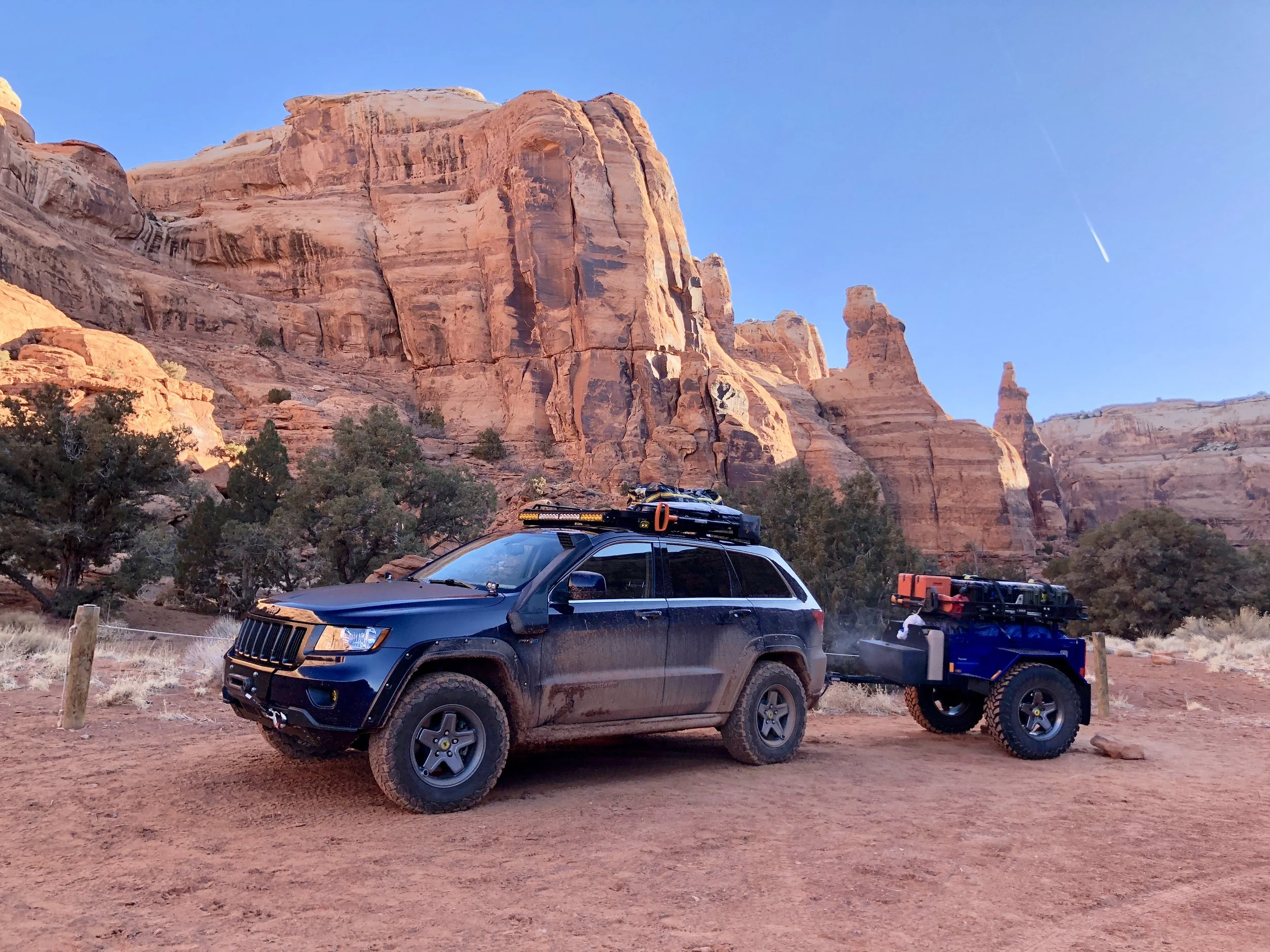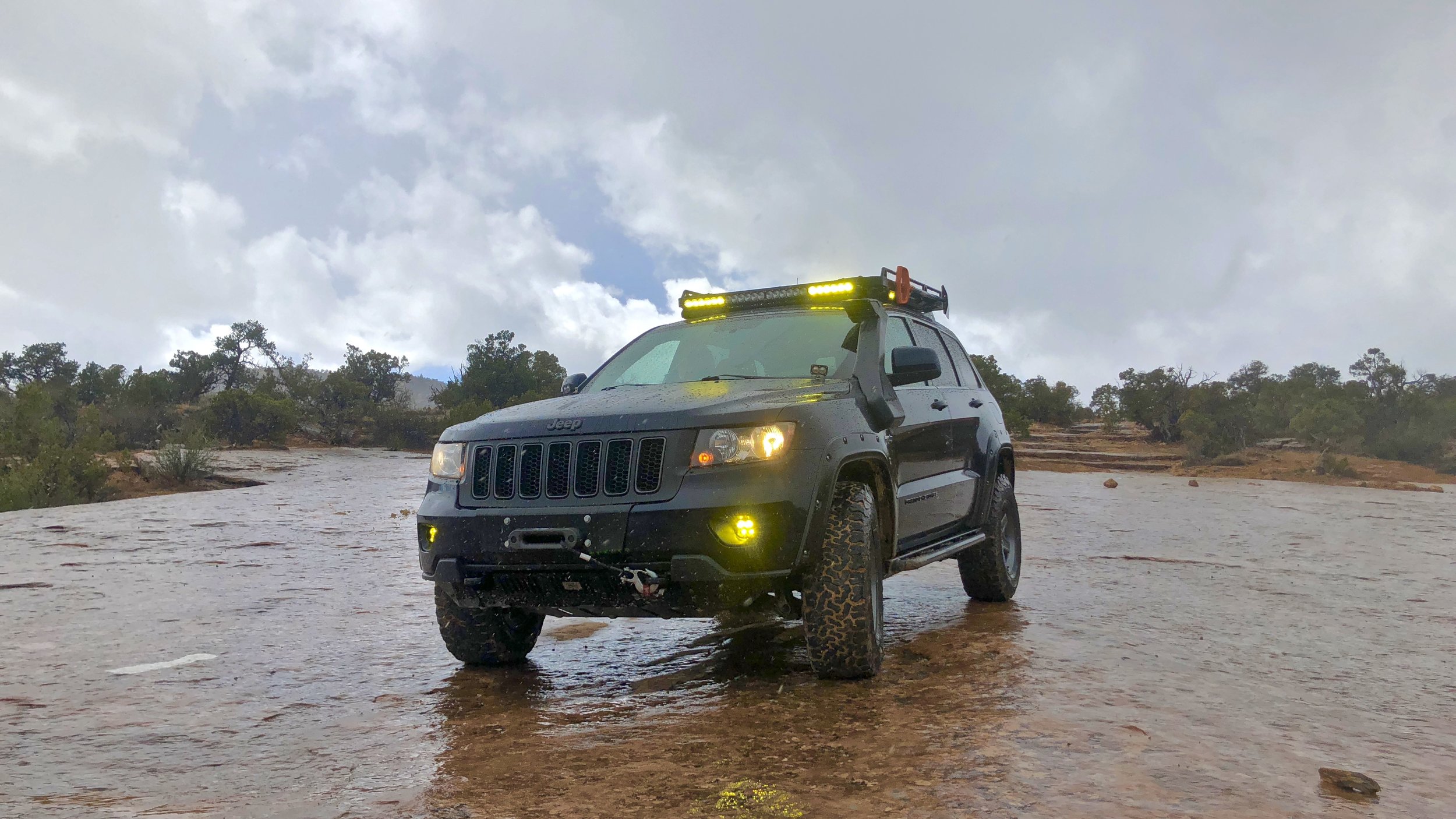Trail Gear
Backcountry travel means being prepared for changing conditions
Winches, compressors, and snorkels, oh my…
AIR COMPRESSOR: An onboard air compressor is one thing I wish every vehicle was equipped with. I even installed one on a junky 1990 Toyota Celica I once owned as a daily driver. For off pavement travel, the ability to “air down” and also repair punctured tires is a necessity. For this, you need some kind of compressed air capability. I personally prefer a vehicle mounted air compressor of some kind over a high pressure portable tank. For the WK2, an engine driven compressor wasn’t very realistic, so a compact ARB 12 volt compressor was installed under the rear seat. It is also possible to do an underhood mount of a small electric compressor, but I wanted a configuration that was out of the elements. Options are also available for a portable case mounted compressor system that can be completely removed from the vehicle and has no associated permanent wiring. The ARB CKMA12 is about the smallest compressor I would be comfortable installing in a backcountry vehicle for tire repairs and airing up. It does the job, but has to work hard to completely bring a tire larger than 31” up to highway pressure. A tire inflation kit and tire repair kit (broken down into a MOLLE pouches) is installed and accessories kept under the back seat next to the compressor for easy access.
ARB mounted under rear seat.
HIDDEN WINCH MOUNT: A winch for self and assisted recovery is a highly desirable tool for those who venture deep into the backcountry. They are also useful for moving heavy objects and clearing trails with the proper rigging. The downside is that a quality winch is expensive, heavy, and can be difficult to mount on a modern SUV. There are currently a couple hidden winch mounting solutions for the WK2 as well as replacement plate bumpers with integrated winch mounts. For this build, I wanted to save weight where I could, and I just couldn’t justify the cost and weight of plate bumper. Also not a fan of how they radically change the looks of the WK2. The only hidden mount available when I began this build was the Rocky Road Outfitters Hidden Winch Mount. Chief Products has since released their own version. The RRO mount I am utilizing is quite good, and mostly fits as advertised. I also ordered a bumper plate, but no brush guard. The mount can be ordered with or without various external bumper additions.
These hidden winch mounts are great, but they are also limited on the winches that can be installed. I went with a legacy Warn XD9000 winch (non-integrated solenoids) with synthetic rope. The synthetic rope is safer to use and saves almost 50lbs. This winch has a non-integrated control pack that can be remotely mounted with some custom power leads. I chose to mount the control pack under the hood on the passenger side near the firewall. This placed the control pack near the power hookups, but required some custom power cables to be run to the winch. A Warn wireless controller is also typically used with this setup and the underhood mount of the control pack gives easy access for plugging in the wireless or wired handheld controller. A small access hole needed to be cut in the plastic grille top so the winch clutch handle could be reached with a tool. This is not terribly convenient, but a small price to pay for a hidden winch setup. Winch rigging and accessories are stored in a Triple Aught Design EDC backpack in the rear of the Jeep.
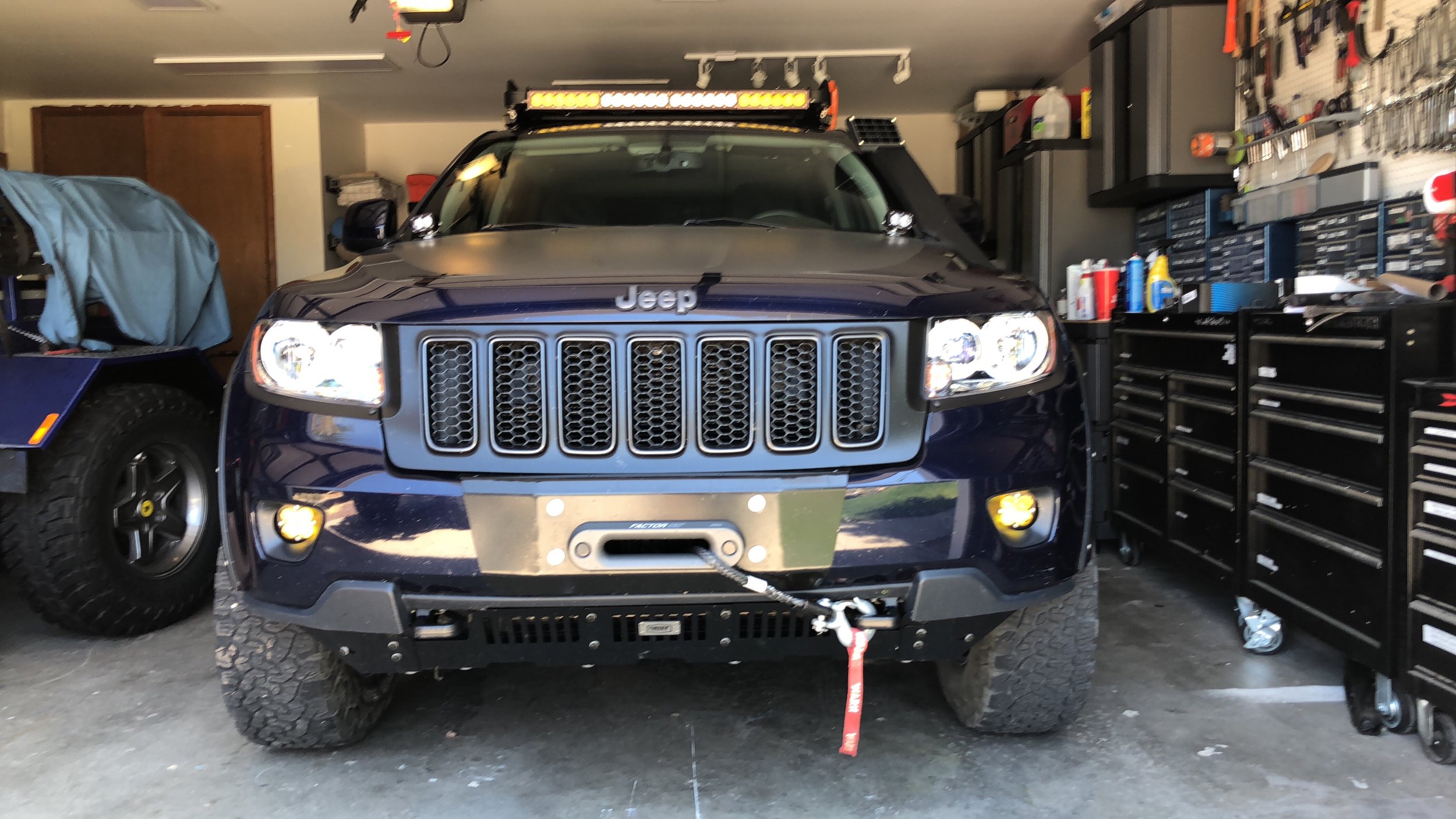

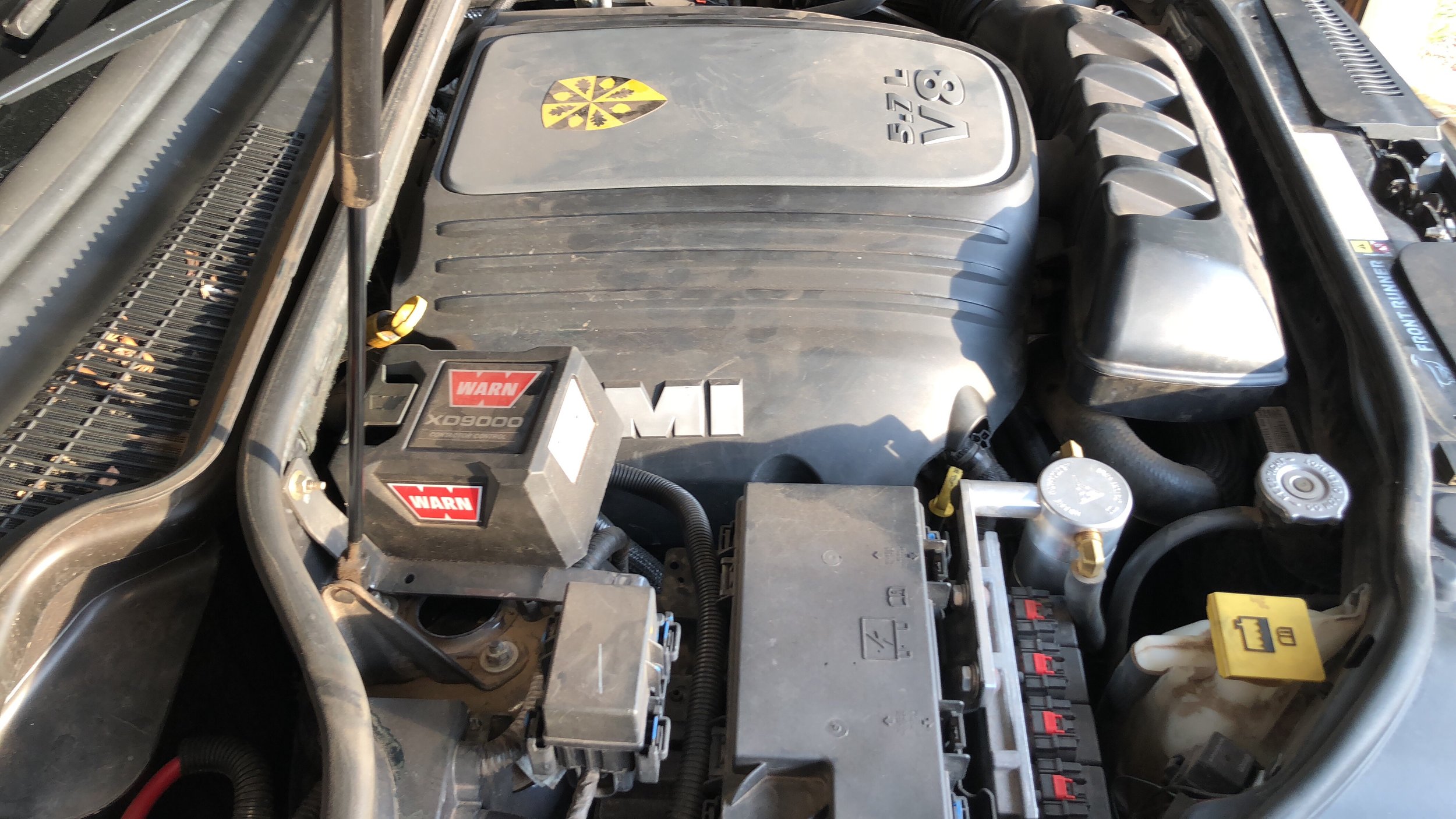
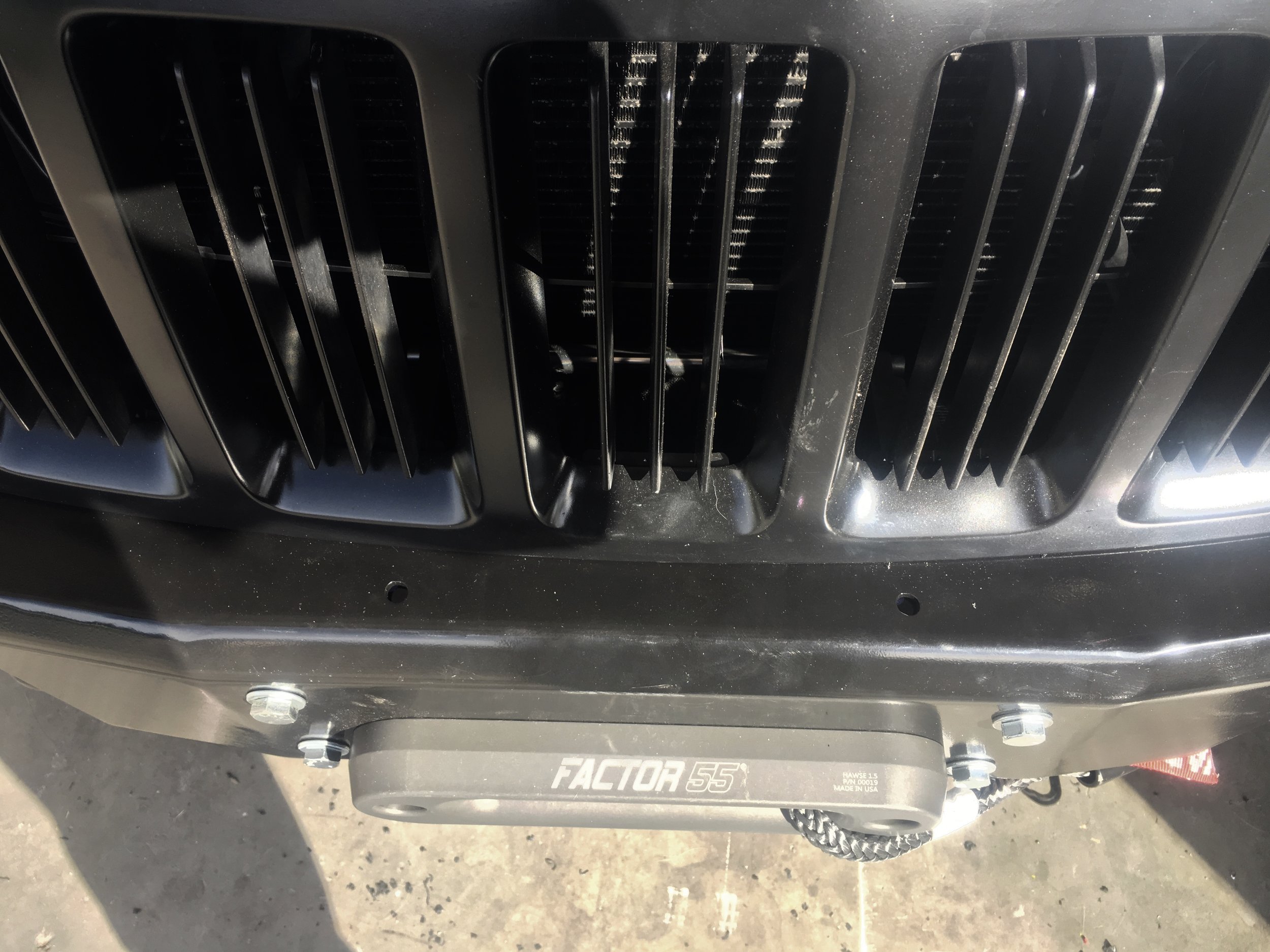
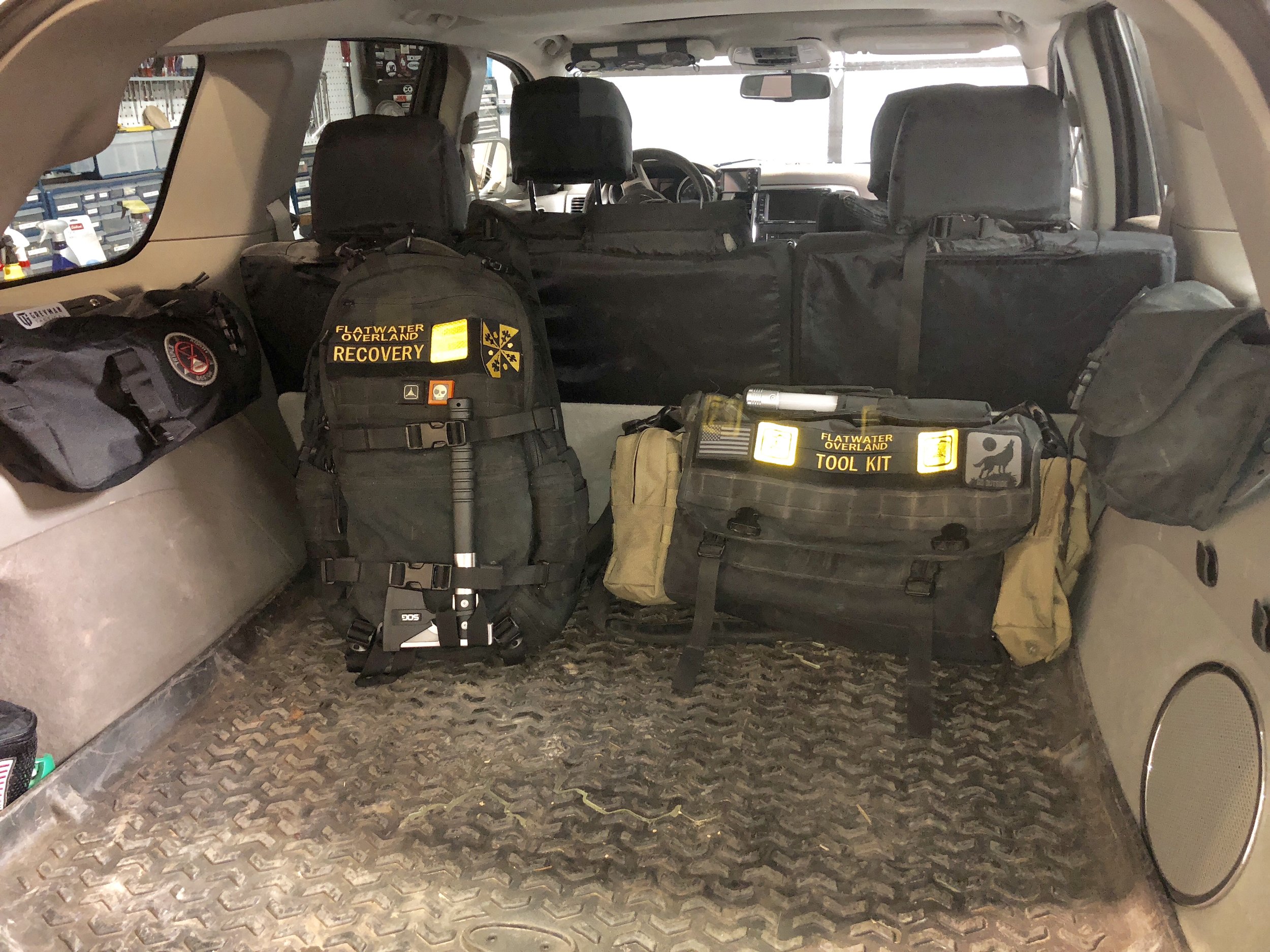
SNORKEL: Engine intake snorkels can be a contentious topic, I am personally a fan. I have one on my Wrangler with both a ram and a centrifugal pre-cleaner attachments. A common misconception is that they are only for deep water fording up to the top of the snorkel- which should be obviously untrue. Jeeps generally have intakes that are mounted as high as possible under the hood and above the rated water fording depth. The problem becomes when the Jeep drives down into a ravine or hole where the front of the engine compartment is now no longer above the fording depth. A properly installed snorkel mitigates this situation and others such as when a wheel or two drops into a hole during a water crossing. Snorkels also are a true “cold air intake”, bringing in air to the engine from outside the engine compartment. Another benefit of snorkels is that they can marginally reduce particle intake when driving in dusty conditions. The Murchison snorkel installed on the Trail Wolf has a fixed ram (my only gripe), and is a perfect fit on the WK2. I don’t recommend attempting the install if you can’t cut large holes in your sheet metal or modify underhood components. It is also possibly the most attractive fully functional snorkel I have seen on a 4x4. The Murchison snorkel had to be imported from Australia, and as of this writing remains the only snorkel available for the WK2 Grand Cherokee.
SWING-AWAY TIRE CARRIER: Currently in the early stages of building a custom swing-away tire carrier for the off-road WK2 Trail Wolf. The carrier will be a single swing to the passenger side with a center tire mount. Most components have been sourced, and fabrication will likely start around the first of the year. Some hinge and latch components were sourced through 4xInnovations. Tube steel was sourced and roll bent to match the rear bumper arc locally. A tire mount plate has also been sourced for the carrier. At this time, there are no plans to add fuel cans or like to the carrier design. This is primarily to keep the tire as close to the tailgate as reasonable.
